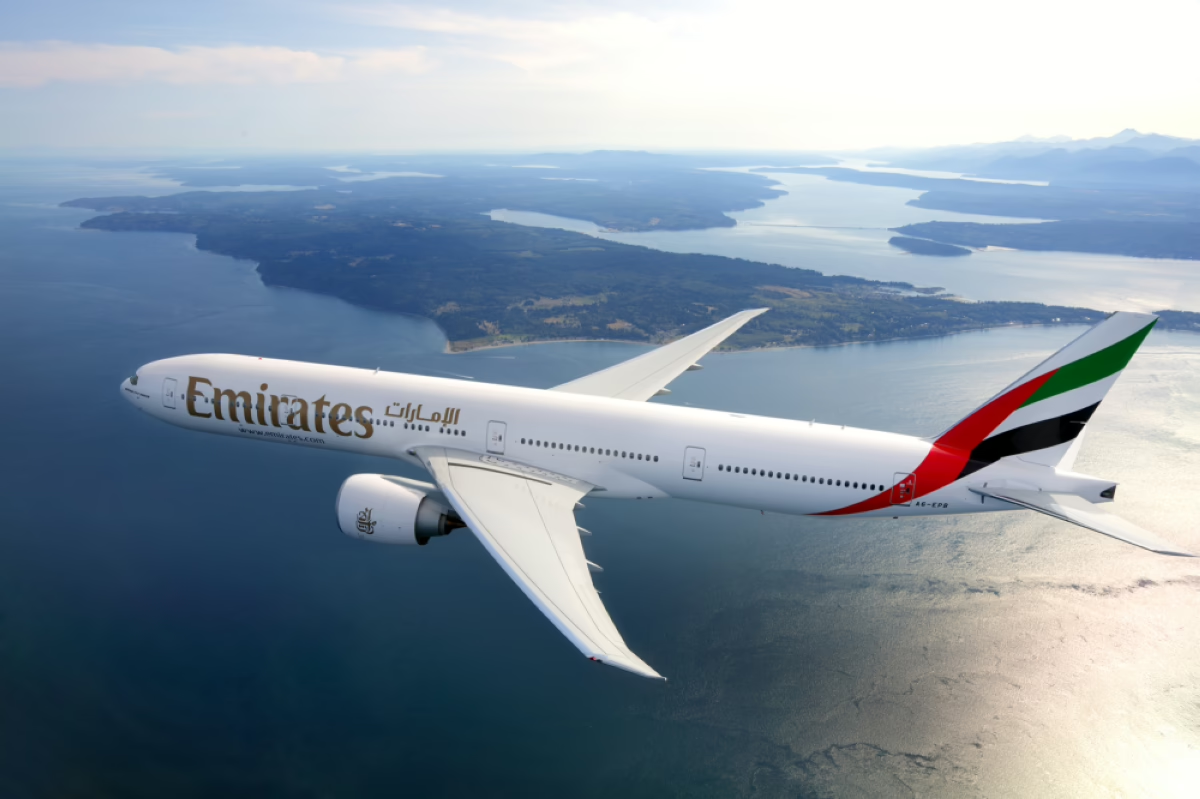Emirates will add four strategic Asian destinations in 2023, deploying its high-capacity Boeing 777-300ERs as the Dubai-based airline fortifies its position as the world’s leading long-haul carrier.
Emirates will launch flights to four new cities this year, expanding its global network to 143 destinations as the Gulf carrier strengthens its dominance in long-haul markets and potentially increases competitive pressure on U.S. and European airlines operating in Asia.
The airline, which ranks first globally for long-haul capacity and third for international seats, will begin service to Da Nang, Vietnam and Siem Reap, Cambodia in June, followed by the Chinese technology hubs of Shenzhen and Hangzhou in July, according to the carrier’s schedule submission to Cirium Diio.
Emirates will operate all new routes with its 421-seat Boeing 777-300ER aircraft, the highest-capacity twin-engine plane in its fleet. The airline currently operates 249 passenger aircraft, including 119 777-300ERs, 116 A380s, 10 777-200LRs, and four recently delivered A350-900s.
The Southeast Asian destinations will be served via Bangkok on a fifth freedom basis, with Da Nang receiving four weekly flights beginning June 2 and Siem Reap scheduled for three weekly flights starting June 3. Both cities have never had direct connections to Dubai or any Middle Eastern carrier.
The Chinese expansion comes after the UAE and China signed an expanded bilateral air service agreement late last year, granting Emirates an additional 14 weekly flight slots. With the new daily services to Shenzhen starting July 1 and Hangzhou beginning July 30, Emirates has now fully allocated its maximum 49 weekly departures to China.
“Shenzhen is now China’s third-richest city—it is known as China’s Silicon Valley—with over 100 billionaires among its 17 million population,” the airline noted. “Hangzhou has China’s sixth-highest number of billionaires and around 13 million people.”
The expansion into China targets growing markets with established demand. Last year, Shenzhen and Hangzhou recorded significant point-to-point traffic to Dubai, with 70,000 and 81,000 passengers respectively. This traffic was partly influenced by existing nonstop flights operated by China Southern and Air China.
Emirates appears to be betting on its ability to stimulate additional passenger traffic while capitalizing on cargo opportunities. The 777-300ER is renowned for its substantial belly-hold freight capacity, providing an important secondary revenue stream, particularly in manufacturing-intensive regions like Shenzhen and Hangzhou.
The ambitious deployment of daily service with large aircraft has raised questions about capacity management. Industry analysts suggest “it’d probably have made more sense to start with a sub-daily frequency or to use the A350-900 instead,” though Emirates currently only has four of the latter aircraft in its fleet.
If Emirates included its partner flydubai’s network, the combined airlines would serve 240 destinations, though the budget carrier’s operations are not factored into Emirates’ own network statistics.

Key Takeaways
- Emirates is adding four new destinations in 2023 (Da Nang, Siem Reap, Shenzhen, and Hangzhou), expanding its network to 143 cities.
- The airline ranks first globally for long-haul capacity and will deploy its 421-seat 777-300ERs on all new routes.
- The Chinese expansion follows an expanded UAE-China bilateral agreement, with Emirates now utilizing its full allocation of 49 weekly flights to the country.
- Da Nang and Siem Reap will be served via Bangkok using fifth freedom rights, with neither city previously having Middle Eastern airline service.
- Emirates’ deployment of daily service with large aircraft to new destinations highlights its aggressive growth strategy despite potential capacity concerns.









